Jerry Nelson
McLean, VA
In
mid-level restoration, problems
in critical areas
(faces) are fixed, simple backgrounds can be suppressed or altered, and
all-but-lost detail is recovered. Specks as well as smaller
scratches and imperfections are removed,
in face/foreground
as well as background areas, so that the image speaks well when
enlarged. Some flash pictures can be made to look
naturally-lighted. If you have several similar poses, and
the
smile is great in one but the eyes are shut there (but not in the next
one), then we can do eye transplants (or worse, as in example
following).


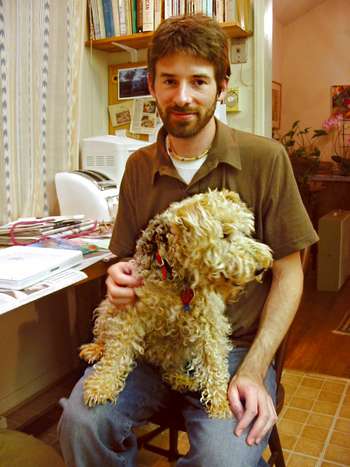
Dog's cute, but the kid's eyes are closed. Kid's OK, but somebody better talk to the dog.
The solution is a Head Transfer. This is a mid-range restoration because the photos themselves need little work, other than color-correction for the greenish fluorescent lighting.
Why send out standard clipart like this on the family newsletter?





You can find things of your own more beautiful than commercial clipart on a quick look through your own photos. With either a file and a print from me, you can compose a letter either electronically or by cutting and pasting real paper.
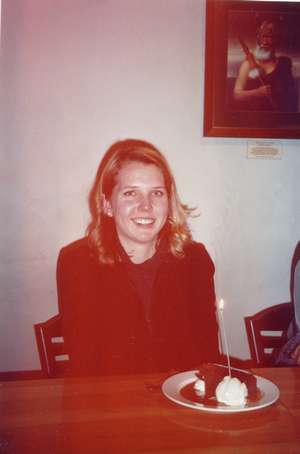

Restoring this faded print was a mid-range restoration job, because the problem had gone beyond a loss of color balance. Around the neckline, the clothing was barely discernable.

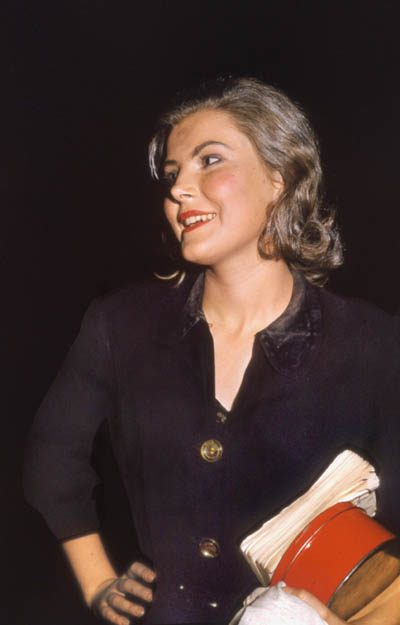
Restoring this old flash picture from a Kodachrome slide was a mid-range task, because hardly more than the person's outline could be gleaned from the original. So the outline of the person (her figure) is photographically correct, but the body itself is largely a re-creation.

Any published photo will be "half-tone screened". The half-tone dots are not just an annoying distraction. They also make it impossible to re-use (publish) that image on either a Webpage or in a new printed document. The new document's half-tone screening, or the pixels of any monitor used to present a Webpage, will interact with the old dot pattern. Of course, the two patterns are never identical in any way. The result is moire fringes ten times more horrible than the original dots. They can look like curtain folds across the photo.
Everyone's solution to this problem is blurring. But there are better ways than smearing the image until the dots are smudged out. A Fourier transform of the image and filtering in the frequency domain can remove the dots' periodicity without reducing other high spatial frequency content (i.e., fine details) in the image. Spatial resolution is not reduced. Fast Fourier Transform technology is compute-intensive, but it gets out the "dottiness" without removing the sharpness of the image.

Half-tone removal by Fourier filtering is the best way to recover the image of a family member who made it into the newspapers (hopefully for deeds entirely honorable). Black-and-white half-tone removal is only a Basic Restoration. Half-tone removal of color images is a Mid-Range job.
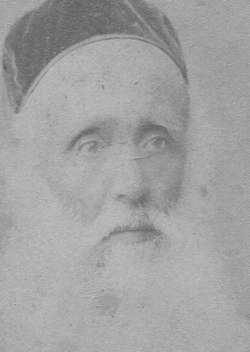
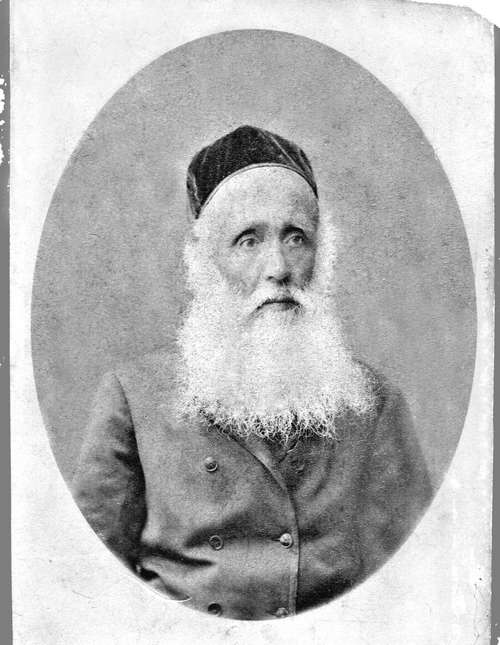
The severe loss of modeling -- the face has faded out to almost "flat" -- made this more than a Basic Restoration, but the badly faded facial image had nothing missing or cut by a crease, and so no miracles were needed.
--jerry
Rev 4/06 1/2010
top home Examples: BASIC Examples: TOP-LEVEL Examples: PANs Outside commercial svcs



To line up
photos side-by-side, just drag the browser window wider.
Dog's cute, but the kid's eyes are closed. Kid's OK, but somebody better talk to the dog.
The solution is a Head Transfer. This is a mid-range restoration because the photos themselves need little work, other than color-correction for the greenish fluorescent lighting.
Why send out standard clipart like this on the family newsletter?





You can find things of your own more beautiful than commercial clipart on a quick look through your own photos. With either a file and a print from me, you can compose a letter either electronically or by cutting and pasting real paper.


Restoring this faded print was a mid-range restoration job, because the problem had gone beyond a loss of color balance. Around the neckline, the clothing was barely discernable.


Restoring this old flash picture from a Kodachrome slide was a mid-range task, because hardly more than the person's outline could be gleaned from the original. So the outline of the person (her figure) is photographically correct, but the body itself is largely a re-creation.

Any published photo will be "half-tone screened". The half-tone dots are not just an annoying distraction. They also make it impossible to re-use (publish) that image on either a Webpage or in a new printed document. The new document's half-tone screening, or the pixels of any monitor used to present a Webpage, will interact with the old dot pattern. Of course, the two patterns are never identical in any way. The result is moire fringes ten times more horrible than the original dots. They can look like curtain folds across the photo.
Everyone's solution to this problem is blurring. But there are better ways than smearing the image until the dots are smudged out. A Fourier transform of the image and filtering in the frequency domain can remove the dots' periodicity without reducing other high spatial frequency content (i.e., fine details) in the image. Spatial resolution is not reduced. Fast Fourier Transform technology is compute-intensive, but it gets out the "dottiness" without removing the sharpness of the image.

Half-tone removal by Fourier filtering is the best way to recover the image of a family member who made it into the newspapers (hopefully for deeds entirely honorable). Black-and-white half-tone removal is only a Basic Restoration. Half-tone removal of color images is a Mid-Range job.


The severe loss of modeling -- the face has faded out to almost "flat" -- made this more than a Basic Restoration, but the badly faded facial image had nothing missing or cut by a crease, and so no miracles were needed.
--jerry
Rev 4/06 1/2010
top home Examples: BASIC Examples: TOP-LEVEL Examples: PANs Outside commercial svcs